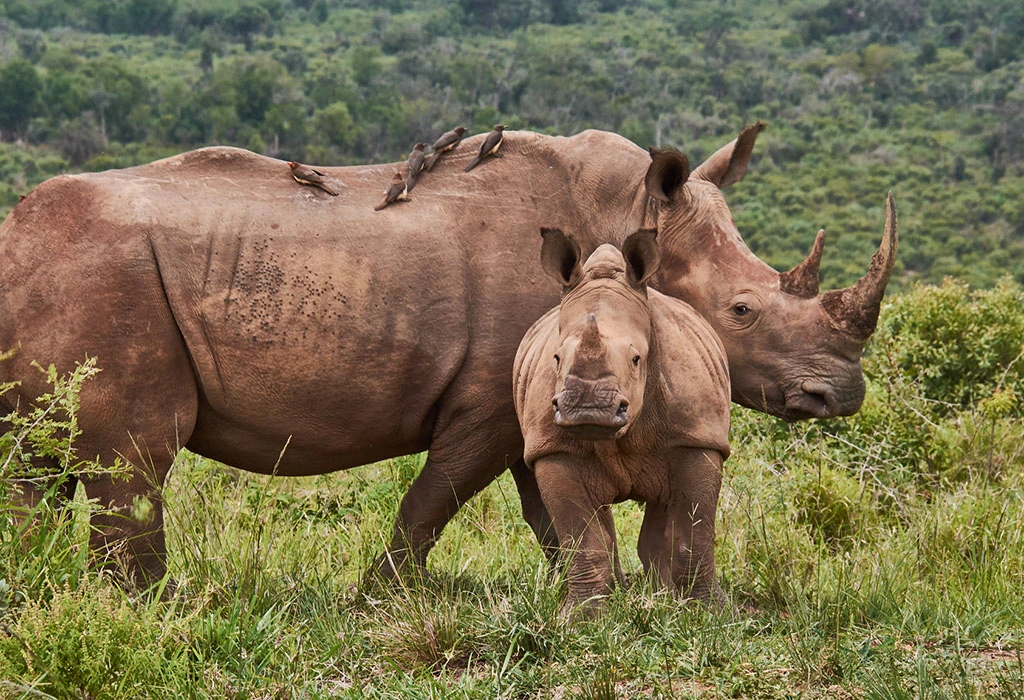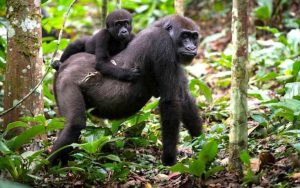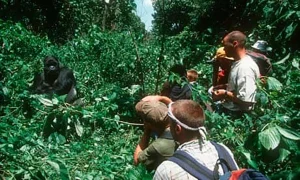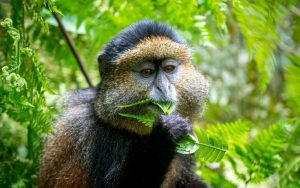Big Five Safaris in Akagera National Park
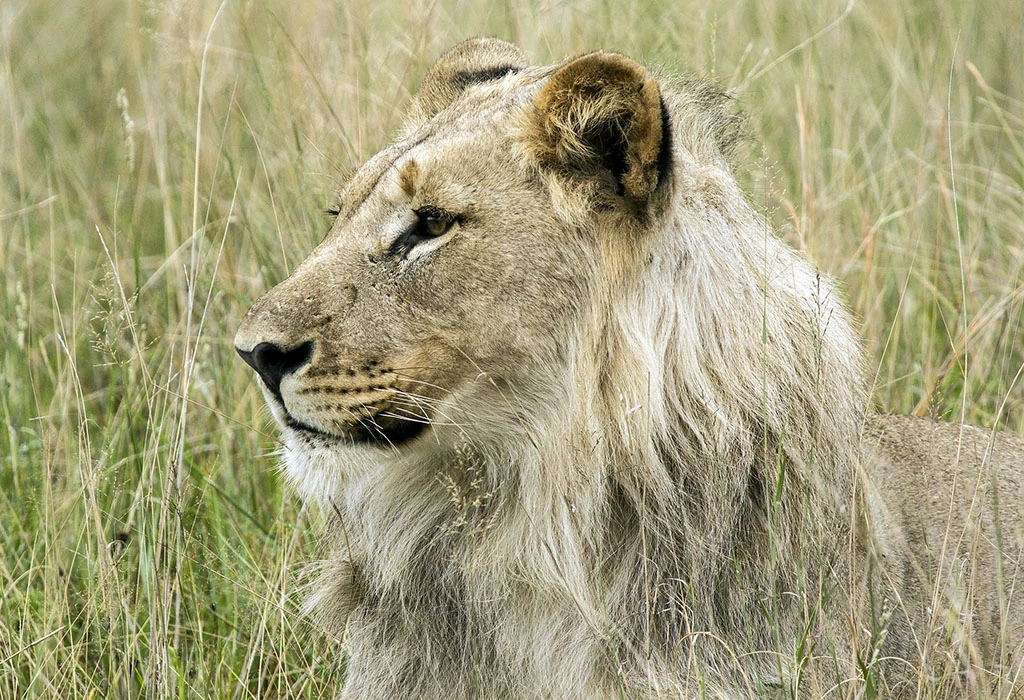
Akagera National Park, located in the eastern region of Rwanda, is a premier destination for anyone seeking an authentic African safari experience. This park is not only one of Rwanda’s most celebrated wildlife reserves but also home to the iconic Big Five—lion, leopard, elephant, buffalo, and rhinoceros. With its diverse ecosystems, including savannahs, woodlands, lakes, and wetlands, Akagera offers a rare opportunity to see these magnificent creatures in their natural environment. Big Five Safaris in Akagera National Park
In this guide, we will provide you with all the essential details about Big Five safaris in Akagera National Park. Whether you’re a wildlife enthusiast, a nature lover, or someone planning a once-in-a-lifetime adventure, this guide will ensure that you have a memorable safari experience.
An Overview of Akagera National Park
Akagera National Park is Rwanda’s largest protected area, covering over 1,000 square kilometers of breathtaking landscapes. The park is named after the Akagera River, which flows along its eastern boundary, nourishing the lakes within the park. The park’s varied ecosystems—grasslands, forests, swamps, and lakes—create the ideal environment for a wide range of wildlife species.
Located about two and a half hours from Kigali, the capital city of Rwanda, Akagera is easily accessible and perfect for day trips or extended safaris. The park was once home to a thriving ecosystem, but the devastation caused by poaching and human encroachment following the 1994 genocide threatened its survival. However, through significant conservation efforts, Akagera has made a remarkable recovery. The reintroduction of species such as lions and rhinos has played a vital role in restoring the park to its former glory, making it a must-visit destination for safari enthusiasts.
Experiencing the Big Five in Akagera
The most exciting aspect of a safari in Akagera is the opportunity to encounter the Big Five—lion, leopard, elephant, buffalo, and rhinoceros—up close. The park offers several safari activities that enable visitors to track these majestic animals in their natural habitats.
Lions
Akagera is one of the few places in Rwanda where you can spot lions in the wild. Lions were reintroduced to the park in 2015 after a long absence. Today, the park is home to a growing lion population, and sightings are becoming increasingly common. Lions can often be seen lounging in the tall grass of the savannah or roaming near the park’s woodland edges. Witnessing these apex predators in action is an unforgettable experience.
Leopards
Leopards are known for their elusive nature, making them one of the more difficult animals to spot during a safari. However, Akagera’s diverse terrain—ranging from dense forests to rocky outcrops—provides the perfect setting for these solitary creatures. If you’re lucky, you may catch a glimpse of a leopard either resting in the trees or hunting along the park’s rugged landscapes. To increase your chances of seeing leopards, it’s best to embark on dawn or dusk game drives, as these are the times when leopards are most active.
Elephants
Akagera is home to a significant population of African bush elephants. These gentle giants can often be seen in large herds, moving gracefully through the savannah or drinking from the park’s numerous lakes. Watching elephants interact within their herds—whether feeding, playing, or protecting their young—is a truly emotional experience. Their presence adds an incredible sense of scale to your safari adventure.
Buffalo
Buffaloes are some of the most frequently spotted animals in Akagera National Park. These powerful creatures often form large herds that graze in the open grasslands or wallow in mud to cool off. The buffalo’s unpredictable nature adds an element of excitement to any safari, especially when they are found in close proximity to lions. Their imposing horns and impressive stature make them an unforgettable sight.
Rhinoceros
Akagera’s rhino population is one of the park’s biggest success stories. The park made headlines in 2017 with the reintroduction of both black and white rhinos. These endangered animals now roam freely across the park’s open plains and bush areas. Rhino sightings are rare but thrilling, and they serve as a powerful reminder of the importance of global conservation efforts.
Safari Activities in Akagera
Akagera offers a variety of safari experiences that allow you to explore its diverse landscapes and encounter the Big Five in different ways. Whether you’re in the mood for a traditional game drive, a boat safari, or something more intimate like a walking safari, there’s something for everyone in this wildlife haven.
Game Drives
Traditional game drives are the most popular way to explore Akagera. Early morning, afternoon, and full-day game drives provide excellent opportunities to spot wildlife. Early morning drives offer the best chances of encountering predators like lions and leopards, as they are more active at dawn. During the hotter part of the day, animals like giraffes, zebras, and antelopes tend to be more visible as they graze in the open savannah.
Boat Safaris
Akagera is home to several picturesque lakes, including Lake Ihema, where visitors can embark on boat safaris. This is a unique way to experience the park, as boat safaris offer a different perspective of the wildlife. You can expect to see hippos, crocodiles, and a wide variety of bird species along the shorelines. It’s a tranquil and scenic activity that complements your game drive.
Walking Safaris
For a more personal and intimate experience with nature, Akagera offers walking safaris led by experienced park rangers. These safaris take you through the park’s lesser-known areas, providing the opportunity to observe the smaller creatures, plant life, and ecosystems that often go unnoticed on traditional game drives. While walking safaris do not focus on the Big Five, they offer a unique way to connect with the park’s natural beauty.
Birdwatching
Akagera is a birdwatcher’s paradise, with more than 500 bird species recorded in the park. From the majestic African Fish Eagle to the rare papyrus gonolek, birdwatching in Akagera is a rewarding experience. You can spot migratory birds, resident species, and a variety of waterfowl along the park’s lakes and wetlands. The combination of diverse habitats makes Akagera a great place for birding year-round.
Best Time to Visit Akagera National Park
The best time to visit Akagera is during the dry season, which runs from June to September. During this period, animals are more concentrated around the remaining water sources, making it easier to spot them. However, the wet season, from October to May, also has its perks. While the landscapes are lush and green, and there are fewer tourists, wildlife may be more dispersed. The wet season is especially great for birdwatching, as many migratory birds visit the park.
Accommodation Options in Akagera
Whether you’re looking for luxury or simplicity, Akagera offers a range of accommodation options to suit different preferences and budgets.
- Ruzizi Tented Lodge is an upscale lodge located near Lake Ihema, offering luxurious accommodations with stunning views of the lake and the surrounding wildlife.
- Akagera Game Lodge provides a more affordable option, offering comfortable rooms, delicious meals, and a swimming pool to relax after a long day of safaris.
- Camping is also available for those who prefer a more rustic and immersive experience. Sleep under the stars and enjoy the sounds of the African wilderness.
Conclusion: Big Five Safaris in Akagera National Park
Akagera National Park is an extraordinary destination for anyone wanting to experience the Big Five in a unique and pristine setting. With its diverse landscapes, abundant wildlife, and numerous safari activities, it offers an unforgettable adventure for visitors. Whether you’re tracking lions in the early morning or taking a peaceful boat safari, Akagera promises to create lasting memories. Beyond its wildlife, the park’s success story in conservation and ecological restoration is a testament to Rwanda’s commitment to preserving its natural heritage.

